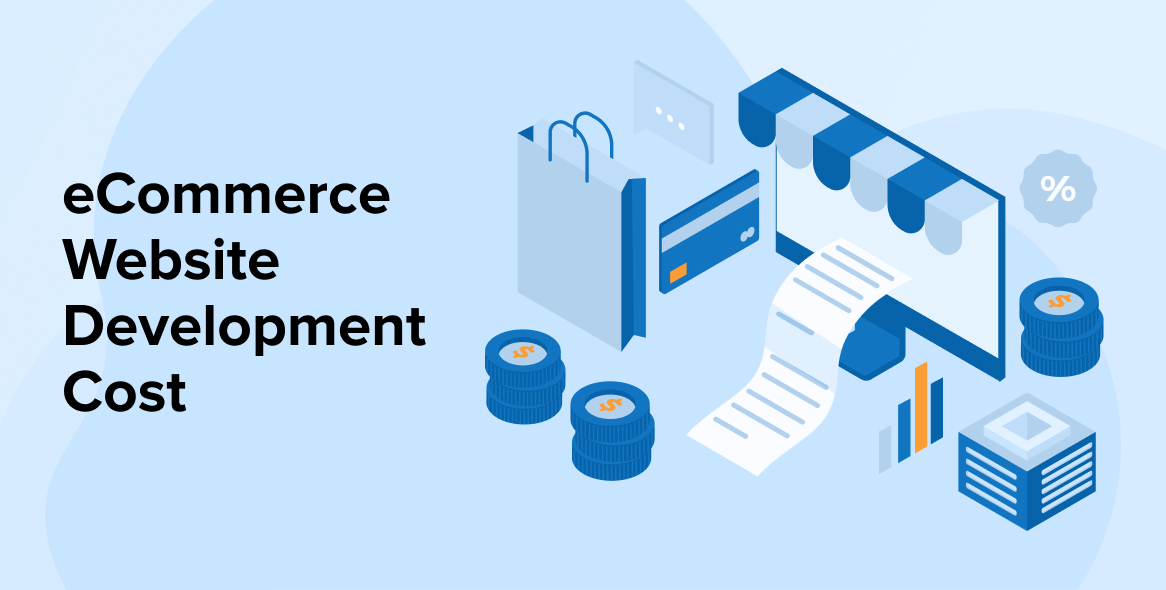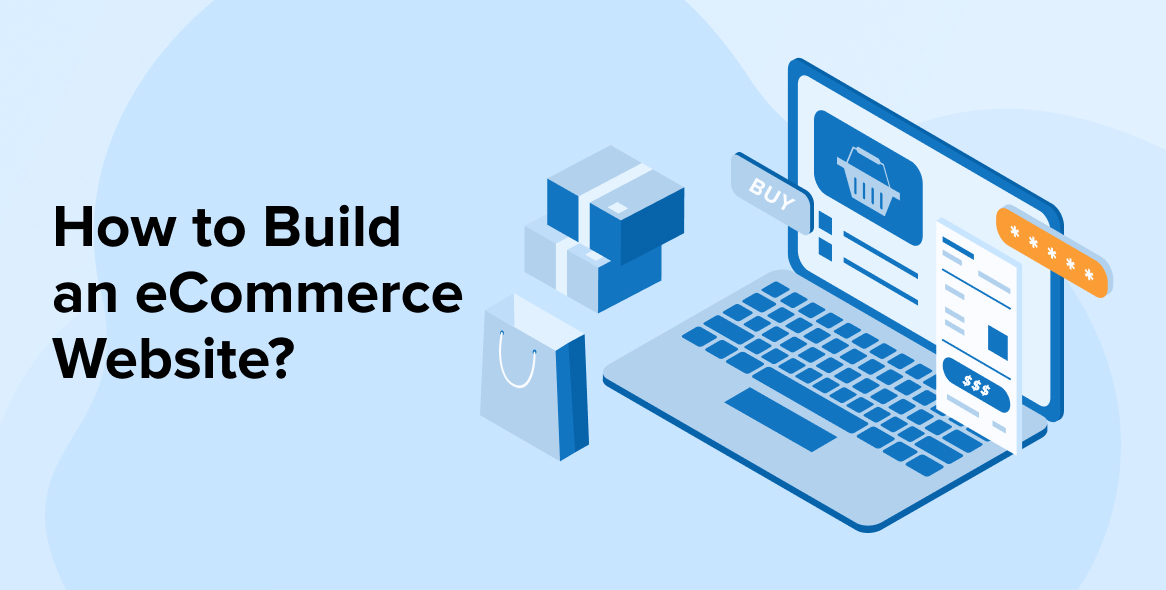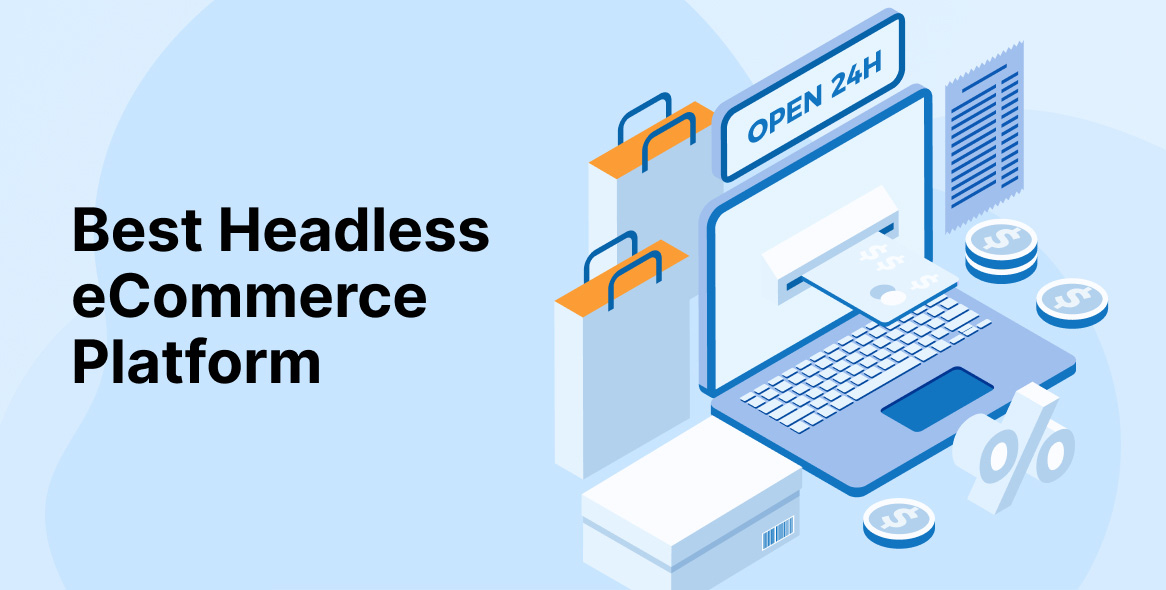
You’ve undoubtedly heard the terms “omnichannel” and “multichannel” thrown about if you work in retail or digital marketing. It might be hard to distinguish between the two when they both use multiple channels to reach consumers.
However, they are not the same thing, and retailers and marketers have distinct reasons for preferring one over the other.
Here, we’ll explain the omnichannel vs multichannel eCommerce marketing strategies to help you define your hired eCommerce development services better and select the most appropriate one for your company.
But first, let’s define what we mean by these approaches.
1. What is Omnichannel eCommerce?
The term “omnichannel” refers to a method of selling online that allows consumers to shop from multiple channels without any disruption in service. By integrating traditional brick-and-mortar storefronts with online and mobile platforms, “omnichannel” enables businesses to reach customers in a variety of ways.
It’s about proving that you understand where they are in the customer lifecycle and interacting with them in a way that makes sense.Instead of viewing channels in isolation, an omnichannel marketing approach takes into consideration the interactions that occur between channels and provides seamless experiences for customers regardless of where they make a purchase.
Omnichannel, at its core, is the elimination of silos between various marketing efforts and sales methods in favor of a more united and cohesive approach. As a single perspective of the consumer and a single user experience of eCommerce evolves, the differences across channels—onsite, digital, mobile, web, offline, and instant messaging—disappear.
Instead of using a hub-and-spoke model, omnichannel integrates digital and offline channels to present customers with tailored advertisements, promotions, and other information across many touchpoints.
1.1 How Does Omnichannel eCommerce Work?
There are many different aspects and methods that make up omnichannel commerce, but overall, an omnichannel strategy focuses on data being collected and distributed across more than one channel so that customers get a seamless experience regardless of how they choose to engage with a business. In certain cases, customers are able to pick up their experience just where they left off, thanks to the seamless transition across channels, making it looks like the company “remembers” them.
While it’s true that omnichannel approaches may wow customers, they can also leave a sour taste if the implemented solution isn’t up to the mark. Microsoft reports that 60% of customers have discontinued buying from a brand because of bad service. Maintaining happy customers requires giving them nothing but a good experience from beginning to end.
Fundamentals of omnichannel ecommerce include:
1.1.1 Locate Brand Touchpoints and Areas Where Consumer Engagement may be Strengthened
With a customer-first mindset, you can better spot openings to improve your brand’s usability or tailor your offerings to individual buyers. The purchase itself is just one point of contact for a business with its clientele. With great brand experiences before and after the transaction, you can improve in sales and customer retention. Customers can be redirected to a more suitable continuation of their current behaviors, or other touchpoints can be added to their trip.
1.1.2 Design a Plan that Centers on the Client’s Needs
Determine the steps that must be taken to ensure a positive client experience is delivered. Is there a way to see where the system could have flaws or where problems might arise? At what moment in the customer journey does the brand hope to achieve its goals? How many of these points of contact can lead to more customer engagement?
1.1.3 Establish Links between Entities for the Exchange of Information
High-quality data is the glue that ties all other components together, and keeping it consistent across systems demands the correct technology stack. If a store wants to use local inventory ads to indicate which items are available for curbside pickup, for instance, it must keep meticulous track of in-store stock, send the inventory values to the ad channel in the form of a product feed, and keep the feed up-to-date as the inventory levels rise and fall.
For this scenario, it’s also crucial to put in place a system that updates the local shop staff on any new purchases and to have someone available who is familiar with handling any problems that may arise.
1.1.4 Put the Plan into Action
Based on the desired outcome and the specific stage of the customer’s journey, this might involve several stages. A consumer making an in-store purchase, for instance, may be encouraged to sign up for a loyalty program or create an account in order to be eligible for future discounts. An omnichannel marketing strategy will have a customer’s profile available in-store, online, and across mobile and desktop platforms, with support available through social media channels as well.
1.1.5 Get More Numbers and Statistics
For the best omnichannel experience, make sure all of your brand’s channels are integrated with one another. Brands may learn about their customers’ points of interest, determine the best course of action for continuing to cultivate their connection with them, and track their progress throughout the customer journey by collecting and analyzing customer data.
The manner in which networks like Google and tech firms like Apple collect users’ data is evolving in response to users’ worries about privacy. As the use of third-party cookies decreases, the value of first-party information increases. First-party data is information that has been voluntarily disclosed by the data subject.
Customers who are willing to provide additional information about themselves are more useful in the long run than those who aren’t since they have shown a desire to develop a closer connection to your company.
Further Reading on: How Does eCommerce Work?
1.2 Benefits of Omnichannel Marketing
Following are the benefits of Omnichannel Marketing:
1.2.1 Enhanced Analytics and Data Collection for Advertising
With the help of an omnichannel strategy, firms are able to acquire and consolidate client data from many channels. A marketer may get a complete picture of their target audience by analyzing data gleaned from many sources, including website cookies, shopping carts, mailing lists, point-of-sale systems, and social media using eCommerce analytics tools. Information gathered in this way may be used to tailor user experiences and guide the development of advertising initiatives, both of which boost user participation and revenue.
1.2.2 Boost Brand Awareness and Recall
When used in marketing, an omnichannel strategy provides a seamless experience across all platforms, hence raising awareness of the company overall. Customers will have a unified experience with your brand across all touchpoints, which will strengthen your relationships with them and make your products more memorable. Even more importantly, customers are more inclined to buy from a reputable company when they have confidence in the brand.
1.2.3 Save on Costs
Marketers may use data insights to guide clever advertising efforts and make more efficient use of available resources. Business owners may make data-driven choices about which channels to engage in by analyzing stats and learning which ones are most popular with clients.
1.2.4 Enhance the Customer Experience
With omnichannel marketing, consumers can get all the details they want through their preferred medium. When this data is simple to access, customers are less likely to get upset by different buying options and more likely to go through with a transaction. Consumers also frequently conduct internet research before making a purchasing decision. That’s why it’s crucial to support customers at any point in their journey spanning devices and channels.
1.2.5 Maximize ROI
There will be an increase in sales if you focus on creating long-lasting connections with your customers by regularly engaging them and providing a smooth path to purchase. Through enhanced word-of-mouth advertising and content personalization, omnichannel marketing helps firms not only keep existing consumers but also acquire new customers.
2. What is Multichannel eCommerce?
Using many distribution points to sell or list something is known as “multichannel retail.” Virtual, offline, or hybrid media are all viable options. A company may choose to sell its wares through a variety of channels, including its own website, physical stores, and online marketplaces.
With multichannel selling, a company may sell the same inventory to more clients through multiple channels. It’s worth noting that retailers may set aside specialized stock for individual sales platforms, as well as modify and optimize product names, photos, and characteristics for each channel individually. Using email, social media, the company’s website, and other methods to lead generation can be a piece of a multichannel retail model.
While the multichannel retail model increases brand awareness and provides customers with more purchasing options, it lacks the seamlessness of the omnichannel approach. In contrast to the common misconception, not all multichannel retail operations are omnichannel. When a client interacts with a business across many channels, their experiences across those channels tend to be segregated. Although all of the many sales channels and marketing channels contribute to the overall company, there is little to no data synchronization across them.
2.1 How Does Multichannel Ecommerce Work?
Providing consumers with access to items is the primary focus of multichannel retailers. The term “multichannel” is commonly used to refer to the many online marketplaces and stores that firms employ to expand their client base. Marketing strategies like this make use of a variety of channels, such as paid search, social media, marketplaces, and the company’s own website. It is found that compared to a single-channel strategy, using several channels resulted in a 90% increase in customer retention.
Product information serves as the backbone of a multichannel strategy. When it comes to keeping track of stock and sales figures, many businesses have turned to e-commerce platforms. In order to assist businesses to strengthen and streamline their internet business, new eCommerce systems provide a wide variety of direct connections, services, and partnerships.
A multichannel retail strategy entails the following steps:
2.1.1 Information on Products may be Found on the Website of the Store Selling Them
Product data must already exist before it can be syndicated. Retailers may add as much information as they wish about their products, such as pictures, descriptions, UPCs, variants (such as size and color), pricing, and stock levels. For all the additional channels via which the retailer intends to disseminate their product data, this repository will serve as the gold standard.
2.1.2 Information about Products is Standardized and Distributed via Syndication
Because of the differences in data needs, integrations, and rules between channels, a merchant’s inventory data cannot be transferred in its current form to any channel on the web. For businesses with a large number of stock-keeping units (SKUs), this is a procedure that may be greatly simplified with the help of appropriate technological solutions.
Partners in product catalogue input raw product data to a single platform, where they may be optimized for maximum performance across all of the intended channels. Information about the items, such as stock, new goods, and price changes, is often updated in the product feed.
Companies can accomplish this on their own, but it requires a large investment in internal development, channel knowledge, and ongoing maintenance of data flows.
2.1.3 Marketplace Sellers have an Additional Channel of Orders to Manage
A company’s responsibility in fulfilling marketplace orders includes receiving the order, verifying that it is for the proper goods, shipping the product, and providing tracking information back to the marketplace. By automating the order fulfilment process, a business may save a lot of time and effort throughout its multichannel strategy as new marketplace channels are introduced.
When a customer makes a purchase in an industry, the product listing associate integrates that customer’s order details into the merchant’s e-commerce platform. The listing affiliate then updates the website with the order’s status after the retailer has processed and fulfilled it in the usual fashion.
2.2 Benefits of Multichannel Marketing
There is a proliferation of channels where your clients spend time, and you need to be present on all of them. Here’s why the multichannel approach is too important to overlook.
2.2.1 Market to More People by Using Different Platforms
The biggest drawback of focusing on only one distribution channel is the inevitable customer defection that occurs when users switch to a different method of interaction. With multichannel marketing, you can follow your leads everywhere they go and locate them on any platform they use.
Incorporating your customer data platform (CDP) into your multichannel marketing strategy allows you to zero in on the channels where your consumers spend the most time and follow them wherever they go.
2.2.2 Use a Multichannel Marketing Strategy to Streamline the Consumer Experience
You are aware of the significance of the period between when a customer sees your marketing campaign and when they make a purchase. Their likelihood of backing out of the purchase increases the longer they delay to finalize the transaction.
With multichannel marketing, you can connect with consumers through their preferred channels of purchase and provide them with customized, contextual connections. Using this method, leads may be swiftly transferred from the marketing department to the sales department.
2.2.3 Make Use of the Features Provided by Various Channels
Any given marketing method may work well in some contexts but underwhelm when used in others. The multichannel marketing paradigm allows you to use the benefits of each channel while compensating for its weaknesses.
A multichannel marketing campaign integrates all of the channels you’re using to reach your audience into a unified effort that can respond quickly to any circumstance. Only by employing a multichannel approach, your brand can take advantage of the strengths of each channel while avoiding their flaws.
2.2.4 Multichannel Advertising can Help Your Retargeting Efforts Succeed
Retargeting plays a significant role in any successful marketing campaign and that a multichannel strategy may aid in this endeavor as well. Whether or not a buyer completes a transaction depends on the quality of the cross-channel experience offered.
It is not uncommon for customers to proceed to the checkout page but then back out at the last minute. The trick is to get in touch with them when their interest in making a purchase is at its highest. You may rapidly and efficiently reach out to your target audience through as many different channels as possible by employing multichannel marketing strategies.
2.2.5 Maximize Your Chances of Success by Converting Leads into Customers
There are several positive aspects of multichannel marketing, but the most significant is the seamless integration of all channels into a single campaign.
If you’re promoting a deal, you may send out promotional emails showcasing your items and then give clients an SMS discount code only minutes after they view the email.
Or, you may use Messenger to contact a shopper who showed interest but ultimately didn’t buy and then follow up with a discount or free shipping offer through email.
The true benefit of multichannel marketing is the cooperation between all of the channels.
3. Omnichannel vs Multichannel eCommerce Differences
While the cornerstone of an omnichannel approach is multichannel, the consistent customer experience, the objectives, and the implementation are significantly different. Here are the key differences between the omnichannel vs multichannel eCommerce.
3.1 Point of Focus
One key difference between omnichannel and multichannel approaches is that omnichannel is more customer-centric, whereas multichannel is more product-centric.
To implement an omnichannel strategy, businesses must first determine where and when customers interact with their brands and then figure out how to make those interactions more valuable for the customer. The goal of a multichannel approach is to expose a company’s wares to as many potential buyers as possible, with the primary focus being on expanding the company’s online presence rather than enhancing the quality of the buyer’s interaction with the brand.
3.2 Channel Integration
In this comparison of omnichannel eCommerce vs multichannel eCommerce, multichannel does not integrate channels with one other, omnichannel retail uses direct links between channels to make them all operate together.
The term “omnichannel retail” is commonly used to describe the integration of offline and internet sales channels within a single company. The term “multichannel retail” is used to describe a company model in which a brick-and-mortar presence and an internet presence coexist, but the two are run independently of one another.
3.3 Customer Experience
A multichannel strategy restricts customer experience to the capabilities of specific channels; an omnichannel strategy opens up entirely new possibilities for consumer engagement.
Brands can provide customers with more unique and memorable experiences by combining the strengths of many channels.
While a multichannel strategy like Amazon’s helps customers locate the things they’re looking for and make purchases through channels they’re already familiar with, that platform’s exclusivity means that buyers never see your brand anywhere else. Brands can use extra marketing strategies to fully integrate their Amazon operations into an overarching omnichannel strategy.
Omnichannel marketing strategy improves the customer experience across all touchpoints, while multichannel marketing employs several channels to communicate the same or unrelated material to a consumer.
4. Omnichannel vs Multichannel eCommerce: Which One is the Best?
Both omnichannel and multichannel strategies have been successful for retailers; the trick is to pick the correct one and stick to it.
4.1 Why to Choose Omnichannel?
It is impossible to have a successful omnichannel retail strategy without a solid multichannel foundation. Customers will have a poor omnichannel experience if a company doesn’t simplify and consistently apply its multichannel processes to meet their needs. Imagine a scenario in which a consumer makes an online purchase and then goes to pick it up in-store, only to find out that the stock levels shown online were incorrect and their order was canceled (without notifying the customer). Systems that don’t function properly alone are unlikely to do so when combined.
The time and money needed to develop an omnichannel strategy is considerable. Companies that lack the necessary internal resources should instead look to acquire an appropriate technological solution. Increased customer engagement and retention are the payback for the greater initial cost associated with an omnichannel strategy as compared to a multichannel one.
4.2 Why to Choose Multichannel?
To attract more buyers, businesses should advertise their wares in as many online stores and marketplaces as possible. Researching whether or not the channel accepts the products, whether or not there is a demand for the products on the channel, whether or not the business is ready to manage an expansion or operations without compromising quality, and whether or not the business is financially viable in the light of the various service charges per channel are all important considerations before choosing which channels to promote or sell on.
Businesses that are hesitant to engage in an omnichannel strategy might benefit from a multichannel strategy; nevertheless, they still need the appropriate technology stack to effectively manage their multichannel operations. As a company expands into a multichannel environment, it faces a substantial challenge if it cannot automate a sizable percentage of the work involved.
Further Reading on: M-commerce vs E-commerce: A Detailed Comparison
5. Final Thoughts
As the name implies, an omnichannel strategy combines offline and internet channels to provide shoppers with a seamless multichannel experience. The objective is to improve customer experience by making things easier for them and tailoring their trip to their specific needs to boost loyalty and commitment.
The goal of a multichannel retail strategy is to expose a brand’s items to as many potential buyers as feasible. Since there isn’t much communication across channels, it’s important to keep all of the product information up to date by syncing it with the main database. For expansion to be controlled and scalable and so that the channels don’t become a detriment to the brand’s entire image, investment in the appropriate technology is still necessary.
Both the omnichannel and multichannel strategies are more complicated than the traditional single-channel strategy, but they have the potential to greatly improve consumer satisfaction. Expanding beyond a one-channel strategy may be very profitable for a company if it is well-planned and uses modern tools.






Comments
Leave a message...